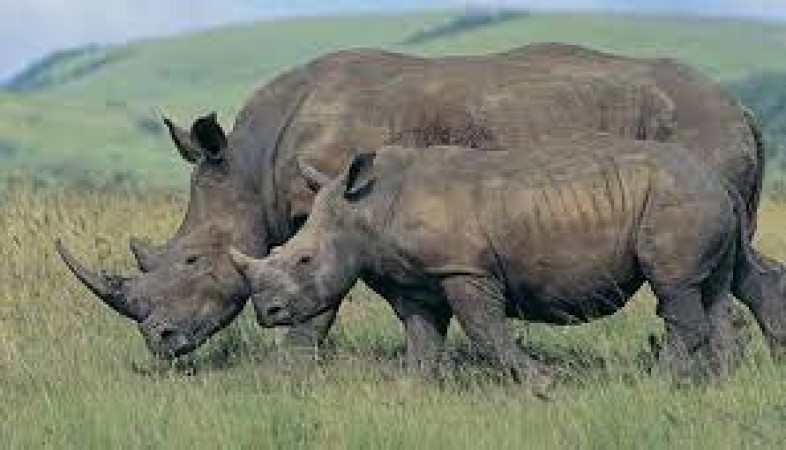
The illegal trade in rhino horns has reached unprecedented levels, posing a significant threat to rhinoceros populations across the world. In this article, we explore the disturbing reality of rhino horn trade, where these precious horns are often deemed more valuable than gold.
Rhinoceroses, often simply referred to as rhinos, are majestic creatures known for their distinctive horns. There are five species of rhinoceros, each facing unique challenges in the wild:
White rhinoceros, scientifically known as Ceratotherium simum, are the largest of the rhino species. They are primarily found in southern Africa, inhabiting grasslands and savannas.
The black rhinoceros, or Diceros bicornis, is critically endangered. Despite their name, they can be gray, brown, or even white. These rhinos are known for their sometimes aggressive behavior.
The Indian rhinoceros, scientifically named Rhinoceros unicornis, is primarily found in the Indian subcontinent. They are the second-largest rhino species, characterized by a single horn.
Javan rhinoceros, or Rhinoceros sondaicus, is among the rarest large mammals in the world. They are critically endangered, with only a small population surviving in Indonesia.
The Sumatran rhinoceros, scientifically known as Dicerorhinus sumatrensis, is the smallest rhino species. These elusive creatures are critically endangered and found in Southeast Asia.
Rhino horns are made of keratin, the same material found in human hair and nails. Despite their composition, these horns hold immense value in various cultures around the world. These remarkable structures can grow up to one meter in length.
In many Asian cultures, rhino horns have a long history of being used in traditional medicine. They are believed to possess curative properties and are used to treat various ailments, from fever to cancer.
In traditional Chinese medicine, rhino horns are considered to have cooling properties and are used to reduce fever and treat various other conditions.
Despite a lack of scientific evidence, some people believe that rhino horn can cure ailments like cancer and hangovers, further driving demand for these precious horns.
In some cultures, possessing a rhino horn is seen as a status symbol, driving the demand for these precious commodities.
In countries like Vietnam, owning rhino horn is associated with wealth and prestige. It is often used in the form of ornate carvings, jewelry, or other status symbols.
Rhino horns have garnered a reputation as a high-priced commodity, often surpassing the value of gold. We delve into the economics of this alarming trend.
In the illicit market, the price of rhino horn has skyrocketed, reaching values that far exceed the worth of gold by weight. This extraordinary value has attracted the attention of criminal syndicates and poachers.
The cost of rhino horn has increased significantly over the years, with a single horn sometimes fetching hundreds of thousands of dollars.
Criminal organizations have been drawn to the lucrative trade in rhino horns, contributing to the poaching crisis.
Efforts to curb the illegal trade in rhino horns have led to the establishment of international laws and conservation initiatives.
The Convention on International Trade in Endangered Species of Wild Fauna and Flora (CITES) has banned the international trade in rhino horn, making it illegal to buy or sell rhino horns across borders.
Conservation organizations have made progress in protecting rhino populations through anti-poaching efforts and habitat conservation.
Poaching remains a critical threat to rhinoceros populations. This section explores the challenges and efforts to combat poaching.
Dedicated park rangers put their lives on the line to protect rhinos from poachers. Their work is essential to safeguarding these magnificent creatures.
Modern technology, including drones and tracking devices, is being used to monitor and protect rhino populations.
Discover how various organizations and individuals are working to raise awareness about the rhino horn trade and its devastating impact on these magnificent creatures.
Prominent individuals and celebrities have used their influence to shed light on the plight of rhinos, helping to garner support for conservation efforts.
Despite the bleak scenario, there is hope for the conservation of rhinoceros species. We discuss the potential avenues for safeguarding their future.
Eco-tourism has become a powerful tool for funding conservation efforts, as visitors contribute to the protection of rhino habitats. In conclusion, the illegal trade in rhino horns continues to threaten rhinoceros populations across the world. Efforts to curb this trade and raise awareness about the issue are ongoing, offering hope for the future of these magnificent creatures.
World Stroke Day: How Lifestyle Choices Impact Your Stroke Risk
Air Fryer: Buy air fryer today at half the price, you will remain completely healthy